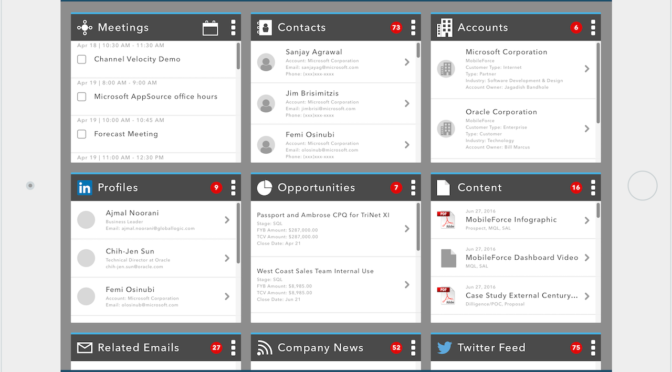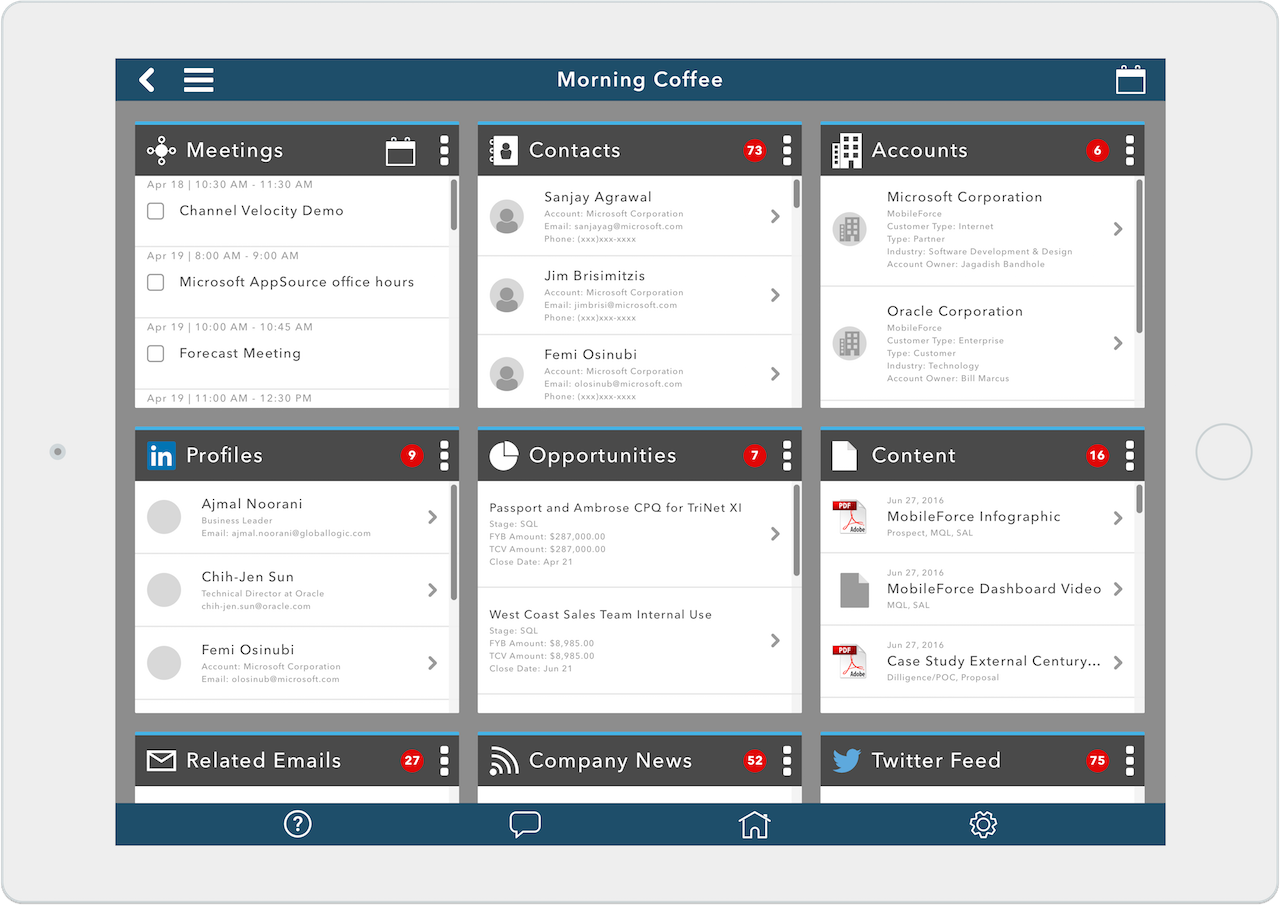The News Details
- Home /
- The News Details
The News &
Updates Details

12
Feb
Post by admin
A Single Pane of Glass User Experience to Succeed in Field Sales
IT has frequently used “Single Pane of Glass” or SPOG, to describe the aggregate or big-picture view that offers an integration or a unified display of information from disparate sources. Typical beneficiaries of a SPOG include systems administrators or corporate executives who like to operate on a dashboard view of the resources they care the most about. The perceived business benefit of an SPOG are evident: time and cost savings, simplicity of usage, and improved productivity.
Implicit in a SPOG view are its most sought-after features:
- Uniform access to disparate systems, perhaps through a single sign-on
- Easy to navigate dashboard without going through several layers of UI
- Real-time information presented just in time on the dashboard
- Ability to surface up to this dashboard only the relevant information from distinct systems of record
- Customizing this dashboard for specific end user needs
- Easy and fast access to aggregated information from disparate systems
- Flexibility to perform C(reate), R(ead), U(pdate), and D(elete) operations on objects in the dashboard
- Taking action directly from the dashboard
- Orchestrating complex workflow through automation
While SPOG has been highly sought after by IT Admins and IT Executives, it has also proven to be rather elusive, primarily because the disparate systems do not provide easy ways to integrate, share, and act on their information. Even more difficult is the process of curating dashboard information based on user needs and anticipating the user’s context from which to provide actionable intelligence.
Most importantly, when the target audience is Business Users, such as Field Sales Reps and Field Service Technicians, the creation of a SPOG experience is still nascent due to a lack of clarity on what information is most useful for business users, and what actions they would like to perform on a day to day basis. While the features desired of a SPOG experience remain the same as IT users, the actual systems that Field Sales users interact with are vastly different from the systems that IT users interact with.
Field Sales users often have to swivel chair between vastly disparate systems of record such as Email, PIM, News, Social Networking, CRM, Content systems, CPQ systems, and ERP systems, and workflows that span across these systems. Many of these systems are not integrated, nor do they provide a common representation of information they share. This causes Field Sales users to often not know where the information sits, how to easily get access to it, resulting in field users having to swivel chair between different systems and repeat actions across different systems. Very little automation is even possible, resulting in mundane, repetitive tasks taking up every day in the life of a sales user. Finally, unlike IT use cases, Business users often need offline access to information with online syncing, making SPOG an even greater challenge.
The MobileForce Software approach not only aggregates and surfaces relevant information across all these systems into a real-time business dashboard, but also provides field users with actionable complex workflow operations across these enterprise systems that enable them to do more work in less time, without having to swivel-chair between these systems. MobileForce Sales Velocity provides uniform read/write operations to common objects in disparate systems of record; and a common intermediate representation of business objects resulting in the ability to automate complex tasks that span enterprise systems. The MobileForce approach disintermediates the UI of the enterprise systems from their backend, thus enabling a single pane of glass experience. MobileForce App clients offer both rich mobile and web access to end users. Finally, MobileForce clients provide secure offline operations on enterprise objects, that preserves the object semantics for subsequent online syncing.



